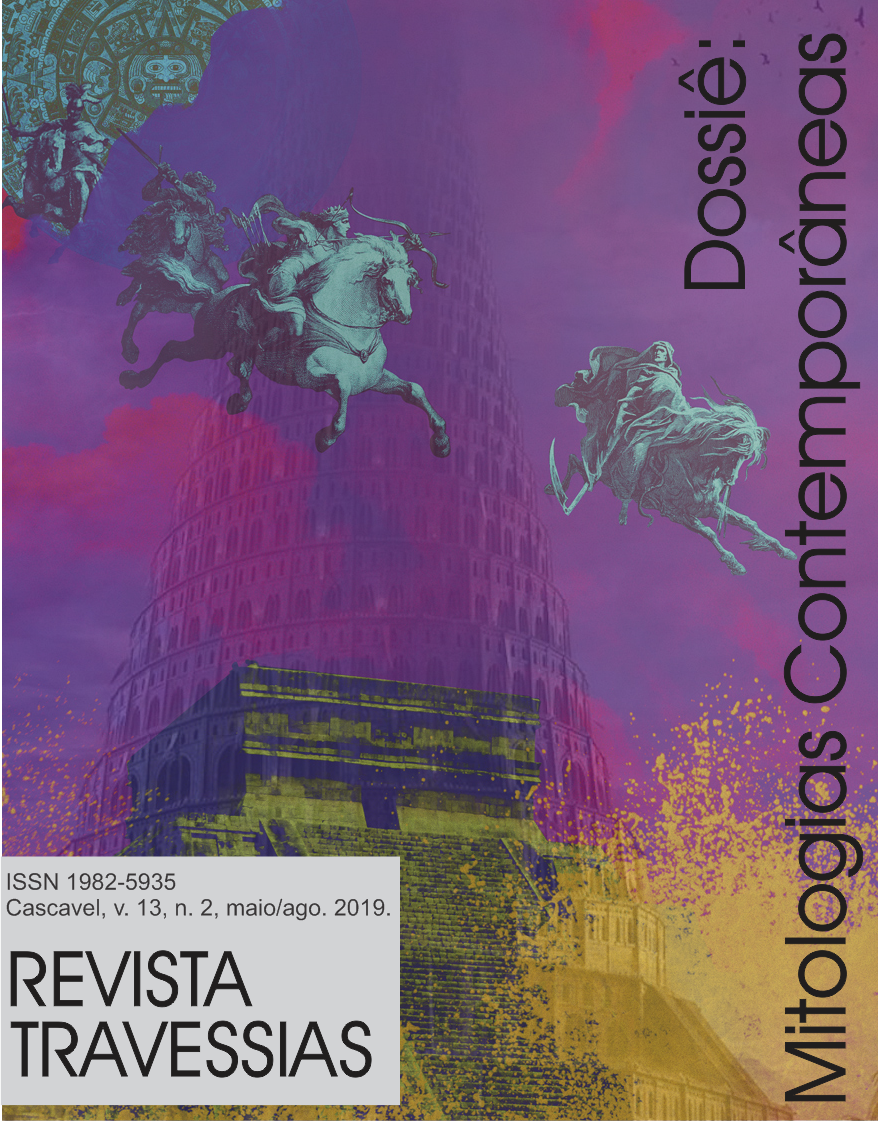O retorno de Inana: a mulher em busca do feminino reprimido
Palavras-chave:
Feminino, Sociedade Patriarcal, Bode expiatório, Mito.Resumo
Este artigo possui o propósito de refletir sobre o mito da deusa Inana e construir pontes entre o feminino reprimido por consequência da sociedade patriarcal e a experiência com a totalidade do ser. Nesta proposta, o mito funciona como ascensão interpretativa da consciência para o nível inconsciente. Assim, este artigo pretende servir de referência para as mulheres que buscam a identificação com o feminino que não está sendo vivenciado em sua inteireza, descendo até as profundezas do mundo inferior para efetivar o resgate do feminino. Como fonte primária será utilizada a obra de Sylvia Brinton Perera, intitulada “Caminho para a iniciação feminina” (1985) que possui base interpretativa do mito na psicologia e de modo secundário, serão utilizadas as obras “O herói de mil faces” (1949) e “O Poder do Mito” (1990) de Joseph Campbell; “O Retorno da Deusa” (1991) de Edward C. Whitmont; “A Dinâmica dos Símbolos” (1997) de Verena Kast e outras obras. O referencial teórico-metodológico por meio de bibliografias da mitologia e psicologia, bem como da filosofia e da história servem de parâmetro para a análise, promovendo um diálogo frutífero entre o mito e as interpretações da Psicologia Analítica. Inana é o símbolo do feminino reprimido e calado, e vem por meio do mito, proporcionar um espaço fecundo para que as mulheres possam se expressar, do mesmo modo como ela se permitiu fazer, muito além das aparências sociais.Downloads
Referências
CAMPBELL, Joseph. O herói de mil faces. Tradução de Adail Ubirajara Sobral. Versão Digital. São Paulo: Editora Cultrix/Pensamento, 1949.
CAMPBELL, Joseph. O Poder do Mito. Ttradução de Carlos Felipe Moisés. São Paulo: Palas Athena, 1990.
GIMENEZ, Luna Pereira. A Mulher Contemporânea e o Feminino: um estudo com mulheres inseridas no mercado de trabalho. Trabalho de Mestrado em Psicologia Clínica do Núcleo de Estudos Junguianos. São Paulo, 2018. Disponível em: https://tede2.pucsp.br/handle/handle/21607. Acesso em: 24 jul. 2019.
KAST, Verena. A dinâmica dos símbolos: fundamentos da psicoterapia junguiana. Tradução de Milton Camargo Mota] São Paulo: Edições Loyola, 1997.
KEHL, Maria Rita. Deslocamento do feminino. 2. Ed. Rio de Janeiro: Imago, 2008.
PERERA, Sylvia Brinton. Caminho para a iniciação feminina. Tradução de Aracéli M. Elman. São Paulo: Ed. Paulinas, 1985.
ROCHA, João Cezar de Castro. René Girard e o desejo mimético: as raízes da violência humana. Revista do Instituto Humanistas Unisinos, São Leopoldo, 382. ed. 28 nov. 2011. Disponível em: http://www.ihuonline.unisinos.br/artigo/17-artigo-2011/4238-joao-cezar-de-castro-rocha-2?showall=&limitstart=. Acesso em: 23 jul. 2019.
SCHULTZ, Adilson. A violência e o sagrado segundo René Girard. Revista Eletrônica do Núcleo de Estudos e Pesquisa do Protestantismo (NEPP) da Escola Superior de Teologia, São Leopoldo, v. 3, n. 1, p. 8-18, jan./abr. 2004.
WITMONT, Edward C. Retorno da Deusa. Tradução de Maria Silvia Mourão Netto. São Paulo: Summus, 1991.
Downloads
Publicado
Como Citar
Edição
Seção
Licença
Aviso de Direito Autoral Creative Commons
Política para Periódicos de Acesso Livre
Autores que publicam nesta revista concordam com os seguintes termos:
1. Autores mantêm os direitos autorais e concedem à revista o direito de primeira publicação, com o trabalho simultaneamente licenciado sob a Licença Creative Commons Attribution que permite o compartilhamento do trabalho com reconhecimento da autoria e publicação inicial nesta revista.
2. Autores têm autorização para assumir contratos adicionais separadamente, para distribuição não-exclusiva da versão do trabalho publicada nesta revista (ex.: publicar em repositório institucional ou como capítulo de livro), com reconhecimento de autoria e publicação inicial nesta revista.
3. Autores têm permissão e são estimulados a publicar e distribuir seu trabalho online (ex.: em repositórios institucionais ou na sua página pessoal) a qualquer ponto antes ou durante o processo editorial, já que isso pode gerar alterações produtivas, bem como aumentar o impacto e a citação do trabalho publicado (Veja O Efeito do Acesso Livre).
Licença Creative Commons
Esta obra está licenciada com uma Licença Creative Commons Atribuição-NãoComercial-CompartilhaIgual 4.0 Internacional, o que permite compartilhar, copiar, distribuir, exibir, reproduzir, a totalidade ou partes desde que não tenha objetivo comercial e sejam citados os autores e a fonte.



